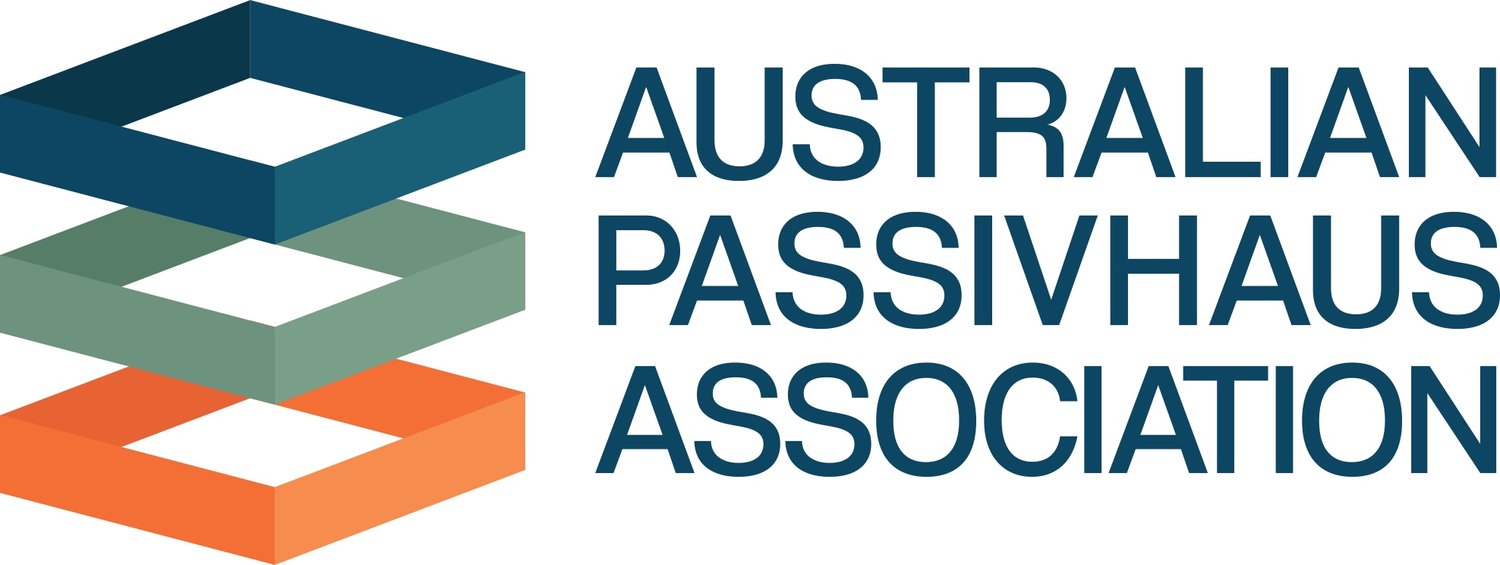
2025 Resource Bank
How to use this resource bank
This resource bank is structured to support your learning journey through each session of the Passivhaus Incubator.
Each week includes supplementary readings, case studies, tools, and materials to deepen your understanding and practical application of each topic.
Index
-
Core Learning Objectives
Understand the five fundamental Passivhaus principles
Grasp the energy performance benefits and reliability
Explore real-world applications and comfort outcomes
📖 Foundational Principles
Five Basic Principles for Passive House ConstructionPassive House Institute [Link: https://passiv.de/en/02_informations/02_passive-house-requirements/02_passive-house-requirements.htm]
Passivhaus Principles Guide 📄 UK Passivhaus Trust [Download: Passivhaus Principles.pdf]
📊 Performance Evidence
Energy Savings Reliability Study (1990-2018) 📄 Comprehensive review of as-built thermal performance [Download: PH energy saving.pdf]
Active for More Comfort: The Passive House 📄 International Passive House Association [Download: passive-house-active-for-more-comfort.pdf]
🏢 Australian Case Study
Glenroy Community HubDemonstrating Passivhaus principles in Australian community infrastructure [Project Details: https://www.passivhausassociation.com.au/project-register/glenroy-community-hub]
-
Core Learning Objectives
Master the technical fundamentals of building envelope performance
Understand ventilation system design for Australian climates
Identify and address thermal bridging challenges
🔧 Thermal Bridging
What is a Thermal Bridge? 🌐 Fundamental concepts and identification guide [Link: https://blog.passivehouse-international.org/what-is-a-thermal-bridge/]
Calculating Linear Thermal Bridges in Passive Houses with THERM 📄 Step-by-step modeling instructions and software guide [Download: ThermInstructions_Version-1c.pdf]
📖 Airtightness Fundamentals
The Passivhaus Guide to Airtightness 🌐 Comprehensive overview of principles and best practices [Link: https://passivehouseplus.ie/magazine/guides/the-ph-guide-to-airtightness]
Good Practice Guide to Airtightness 📄 Practical implementation strategies and common challenges [Download: Good Practice Guide to Airtightness.pdf]
🌬️ Ventilation Design and Health
Designing Passive House Ventilation Systems 🌐 Putting ventilation front and center in design process [Link: https://www.achrnews.com/articles/143762-designing-a-passive-house-means-putting-ventilation-front-and-center]
Ventilation Design for Multifamily Residential Buildings 📄 Specific considerations for multi-unit developments [Download: Ventilation Design Considerations for Passive House Multifamily Residential Buildings.pdf]
Ventilation Systems Overview 🎥 Visual guide to system types and installation [Video: https://www.youtube.com/watch?v=Ut9wQmbUY7I&ab_channel=PolyurethanesMedia]
📊 Health and Performance Research
Health and Wellbeing in Highly Energy Efficient Buildings 🌐 Field study results on occupant health outcomes [Research: https://www.ncbi.nlm.nih.gov/pmc/articles/PMC5369150/]
Passive House and Radon Control 📄 Effective radon mitigation in domestic construction [Download: Certified_passive_house._An_effective_control_of_randon_in_domestic_construction.pdf]
-
Core Learning Objectives
Specify high-performance windows for Passivhaus projects
Calculate primary energy consumption and renewable integration strategies
🪟 Window Performance and Selection
What is a Passive House Window and How Do I Pick One? 🌐 Comprehensive guide to window specifications and selection criteria [Link: https://www.bauwerksolutions.com/blog/passive-house-windows]
Passive Design Introduction Theory 📄 University of Strathclyde - Fundamental design principles [Download: passivedesign.pdf]
Active for More Comfort: The Passive House 📄 Building envelope performance and comfort relationships [Download: assive_House_Active_for_more_comfort_brochure.pdf]
⚡ Primary Energy and Renewables
Primary Energy Renewable (PER): Strategies for Staying within Limits 📄 Practical approaches to meeting renewable energy requirements [Download: NetPositive_PerStrategies_Monte-Paulsen.pdf]
-
Core Learning Objectives
Understand Passivhaus classifications (Classic, Plus, Premium) and EnerPHit retrofit standard criteria
Navigate certification processes for buildings, professionals, and products
Learn strategic timing for engaging consultants and certifiers in the design process
Gain behind-the-scenes insights into the certification review process and PHPP software requirements
📖 Certification Framework
APA Guide to Certification 📄 Australian Passivhaus Association certification pathway [Download: APA Guide to Certification.pdf]
Passive House Standard Flow Diagram 📄 Visual process map for certification pathways [Download: PHINZ-flow-diagram-7.pdf]
Claiming the Passive House Standards 📄 New Zealand framework for standard implementation [Download: Claiming-the-Passive-House-Standard-NZv6-web.pdf]
Phius Certification Guidebook 📄 Comprehensive North American certification procedures (v3.1) [Download: Phius Certification Guidebook v3.1.pdf]
🔧 Passivhaus Planning Package (PHPP)
PHPP Design Support and Resources 🌐 Official tools and guidance from the Passivhaus Trust [Link: https://www.passivhaustrust.org.uk/design_support.php]
PHPP-ASHRAE-140 Validation Report 📄 Software validation and accuracy verification (January 2019) [Download: PHPP-ASHRAE-140-Validation-Report-Jan-23-2019.pdf]
Planning Policy Integration Guide 📄 Incorporating Passivhaus standards into planning frameworks [Download: Planning Policy Integration Guide.pdf] [Link: https://planning.org.uk/docs/20210427/72/QRAYGTTUH8Z00/l5xiyzkk5rf9ivbf.pdf]
-
Core Learning Objectives
Understand legal issues and requirements for claiming Passivhaus standards in contracts
Navigate Early Contractor Involvement (ECI) and specialized contracting approaches for Passivhaus delivery
Develop comprehensive scope of works documentation that ensures Passivhaus requirements are met
Analyze cost structures, economic feasibility, and procurement strategies to debunk cost myths
📖 Procurement Strategy and Contracting
How Passivhaus Differs from Conventional Contracting 🌐 RICS Construction Journal - specialized procurement approaches [Link: https://ww3.rics.org/uk/en/journals/construction-journal/procuring-passivhaus-homes.html]
Passivhaus Overlay to the RIBA Plan of Works 🌐 Integration with standard project delivery frameworks [Link: https://www.passivhaustrust.org.uk/news/detail/?nId=1153]
UN Guidance on Procuring Sustainable Buildings 📄 International best practices for sustainable construction procurement [Download: guidance_document_on_procuring_sustainable_buildings_and_construction.pdf]
Procurement Conflicts in Passivhaus Projects 🌐 Common challenges and mitigation strategies [Link: https://elrondburrell.com/blog/procurement-conflicts-passivhaus/]
💼 Economic Feasibility and Cost Analysis
Debunking the Myth that Passivhaus is Costly 🌐 AECOM analysis of cost structures and economic benefits [Link: https://aecom.com/without-limits/article/debunking-the-myth-that-passivhaus-is-costly-to-achieve/]
Economic Feasibility of Passive House Design 🌐 Comprehensive cost-benefit analysis framework [Link: https://passipedia.org/basics/affordability/economic_feasibility_of_passive_house_design]
🏢 Implementation Case Studies
The Keys to Successful Passive House Implementation 📄 Case study analysis of successful project delivery [Download: group_b_-d33_case-study_5_passive_house_success_stories_2022.03.21.pdf]
Passive Houses in Norway - University Research 🌐 Academic analysis of implementation strategies and outcomes [Link: https://core.ac.uk/reader/30838930]
-
Core Learning Objectives
Analyze Passivhaus performance in Australian climates and compare with NatHERS rating systems
Understand global policy frameworks driving Passivhaus adoption and their applicability to Australia
Master project cost components, risk factors, and cost trajectory patterns from international experience
Explore sustainable finance mechanisms and policy instruments that unlock Passivhaus value
📖 Australian Market Context
Passivhaus in Australian Climates 📄 Technical performance analysis across climate zones [Download: 05-19-Eco-technical-paper.pdf]
NatHERS vs Passivhaus 🌐 Understanding differences between Australian and international rating schemes [Link: https://www.passivhausassociation.com.au/news/nathers-vs-passivhaus-understanding-the-differences-between-these-energy-rating-schemesnbsp]
🌍 International Standards and Policy
International Passive House Standard 📄 Comprehensive building criteria and EnerPHit requirements [Download: Passive-House-and-EnerPHit_building_criteria.pdf]
Global Passive House Legislation & Funding 🌐 International policy landscape and funding mechanisms [Link: https://passivehouse-international.org/index.php?page_id=501]
Passive House and Sustainable Development Goals 🌐 Connecting building standards with global sustainability aims [Link: https://passipedia.org/basics/passive_house_and_the_sustainable_development_goa
📊 Policy Research and Implementation
Policy That Works: North American Passive House Adoption 📄 Investigation into effective policy drivers (2022) [Download: PHN_Report_Policy_That_Works_V1.1_June_2022.pdf]
Safe at Home: Climate Resilience through Passive House 📄 All-electric, multi-family building performance analysis (2023) [Download: Passive-House-Network-Summer-2023-Report-Safe-at-Home.pdf]
Stepping Up to Passive: Policies We Want 📄 Policy recommendations for accelerated adoption (2023) [Download: 2023-Policies-We-Want-Brief.pdf]
💲 Finance and Performance Evaluation
Building Performance Evaluation Guide 📄 GHA Knowledge Base for performance assessment [Download: BPE_guidance_final.pdf]
Unlocking Value: Sustainable Finance in Australian Real Estate 📄 Practical guide to financing sustainable buildings [Download: gbca-sustainable-finance-final.pdf]
-
Core Learning Objectives
Master Passivhaus retrofit construction methods, modeling approaches, and EnerPHit certification requirements
Analyze staged retrofit costs, phases, and transaction cost factors for project planning
Identify optimal building typologies and "low-hanging fruit" assets for Passivhaus retrofit implementation
Navigate policy barriers, strata issues, and regulatory changes needed to support retrofit programs
🔧 Retrofit Methods and Construction
A Prefab Approach for Passivhaus Deep Retrofit 🌐 Australian innovation in modular retrofit solutions [Link: https://thefifthestate.com.au/innovation/building-construction/a-prefab-approach-for-a-passivhaus-deep-retrofit/]
More PreFab Passive House Options for North America 🌐 Scalable retrofit models and approaches [Link: https://www.architectmagazine.com/technology/a-new-model-passive-house-for-north-america_o]
📊 Cost Analysis and Transaction Economics
Exploring Transaction Costs in Passive House Retrofitting 📄 Comprehensive economic analysis of retrofit barriers [Download: Kiss_Mundaca_TCs_IAEE_Rome_final.pdf]
📈 Performance Assessment and LCA
Life-Cycle Assessment of a Retrofit 🌐 Environmental impact analysis and performance verification [Link: https://passivehouseaccelerator.com/articles/a-life-cycle-assessment-of-a-retrofit]
🏢 Regional Implementation and Policy
Passivhaus Retrofit in the UK 📄 Policy framework and implementation strategies [Download: PHT Retrofit Position Paper UK.pdf]
🎯 Case Studies and Certification
An EnerPHit Certified Retrofit 📄 Detailed project presentation and certification process [Download: SPPHC17-Seagren-Presentation.pdf]
RetrofitNY: RiseBoro Passive House Retrofit with Tenants in Place 📄 Social housing retrofit with occupied buildings [Download: 19-24-RetrofitNY-RiseBoro-Passive-House-Retrofit-with-Tenants-in-Place-Schematic-Design.pdf]
-
Core Learning Objectives
Develop compelling business cases and advocacy strategies for internal Passivhaus adoption
Navigate regulatory frameworks and building code integration challenges across different jurisdictions
Build stakeholder engagement plans that address technical, economic, and cultural barriers
Create implementation roadmaps for local authorities and organizational policy development
📋 Policy Development and Advocacy
Stepping Up to Passive: Policies We Want 📄 Strategic policy recommendations for accelerated adoption (2023) [Download: 2023-Policies-We-Want-Brief.pdf]
NAPHN 2019 Policy Resource Guide 🌐 North American Passive House Network policy toolkit [Link: https://drive.google.com/file/d/1x49Xmey6qaqfG-XDhzvq4TfbdTqhvi0a/view]
🏛️ Regulatory Integration
UK Passivhaus & Building Regulations 🌐 Integration strategies with existing regulatory frameworks [Link: https://www.passivhaustrust.org.uk/competitions_and_campaigns/passivhaus-building-regulations/]
Zero Energy Building Definitions and Policy Activity 📄 Australian Government international review of policy frameworks [Download: https://www.dcceew.gov.au/sites/default/files/documents/zero-energy-building-definitions-policy-activity-international-review.pdf]
Regulating Excellence – Passive House Canada 📄 Policy series on regulatory implementation [Download: policy-series-4-regulating-excellence.pdf]
🔍 Implementation Challenges and Solutions
Interrogating Technical, Economic and Cultural Challenges in the UK 📄 Comprehensive analysis of delivery barriers [Download: PassivHaus_UK_eBook.pdf]
Implementation Roadmap for Local Authorities 📄 ZEMCH 2021 - practical guide for policy implementation [Download: Implementation of Passive House ZEMCH2021.pdf]
🏢 Technical and Regulatory Guidance
Energy Efficiency Improvements on Passive House 📄 Mandatory provisions and general recommendations [Download: Energy Efficiency Improvements on the Passive House.pdf]
Week 1: Criteria Principles, Benefits, and Background of Passivhaus
Core Learning Objectives
Understand the five fundamental Passivhaus principles
Grasp the energy performance benefits and reliability
Explore real-world applications and comfort outcomes
Essential Resources
📖 Foundational Principles
Five Basic Principles for Passive House Construction Passive House Institute [Link: https://passiv.de/en/02_informations/02_passive-house-requirements/02_passive-house-requirements.htm]
Passivhaus Principles Guide 📄 UK Passivhaus Trust [Download: Passivhaus Principles.pdf]
📊 Performance Evidence
Energy Savings Reliability Study (1990-2018) 📄 Comprehensive review of as-built thermal performance [Download: PH energy saving.pdf]
Active for More Comfort: The Passive House 📄 International Passive House Association [Download: passive-house-active-for-more-comfort.pdf]
🏢 Australian Case Study
Glenroy Community Hub Demonstrating Passivhaus principles in Australian community infrastructure [Project Details: https://www.passivhausassociation.com.au/project-register/glenroy-community-hub]
Week 2: Airtightness, Ventilation and Thermal Bridging
Core Learning Objectives
Master the technical fundamentals of building envelope performance
Understand ventilation system design for Australian climates
Identify and address thermal bridging challenges
Essential Resources
🔧 Thermal Bridging
What is a Thermal Bridge? 🌐 Fundamental concepts and identification guide [Link: https://blog.passivehouse-international.org/what-is-a-thermal-bridge/]
Calculating Linear Thermal Bridges in Passive Houses with THERM 📄 Step-by-step modeling instructions and software guide [Download: ThermInstructions_Version-1c.pdf]
📖 Airtightness Fundamentals
The Passivhaus Guide to Airtightness 🌐 Comprehensive overview of principles and best practices [Link: https://passivehouseplus.ie/magazine/guides/the-ph-guide-to-airtightness]
Good Practice Guide to Airtightness 📄 Practical implementation strategies and common challenges [Download: Good Practice Guide to Airtightness.pdf]
🌬️ Ventilation Design and Health
Designing Passive House Ventilation Systems 🌐 Putting ventilation front and center in design process [Link: https://www.achrnews.com/articles/143762-designing-a-passive-house-means-putting-ventilation-front-and-center]
Ventilation Design for Multifamily Residential Buildings 📄 Specific considerations for multi-unit developments [Download: Ventilation Design Considerations for Passive House Multifamily Residential Buildings.pdf]
Ventilation Systems Overview 🎥 Visual guide to system types and installation [Video: https://www.youtube.com/watch?v=Ut9wQmbUY7I&ab_channel=PolyurethanesMedia]
📊 Health and Performance Research
Health and Wellbeing in Highly Energy Efficient Buildings 🌐 Field study results on occupant health outcomes [Research: https://www.ncbi.nlm.nih.gov/pmc/articles/PMC5369150/]
Passive House and Radon Control 📄 Effective radon mitigation in domestic construction [Download: Certified_passive_house._An_effective_control_of_randon_in_domestic_construction.pdf]
Week 3: Windows, Primary Energy, Renewables and Services
Core Learning Objectives
Specify high-performance windows for Passivhaus projects
Calculate primary energy consumption and renewable integration strategies
Essential Resources
🪟 Window Performance and Selection
What is a Passive House Window and How Do I Pick One? 🌐 Comprehensive guide to window specifications and selection criteria [Link: https://www.bauwerksolutions.com/blog/passive-house-windows]
Passive Design Introduction Theory 📄 University of Strathclyde - Fundamental design principles [Download: passivedesign.pdf]
Active for More Comfort: The Passive House 📄 Building envelope performance and comfort relationships [Download: Passive_House_Active_for_more_comfort_brochure.pdf]
⚡ Primary Energy and Renewables
Primary Energy Renewable (PER): Strategies for Staying within Limits 📄 Practical approaches to meeting renewable energy requirements [Download: NetPositive_PerStrategies_Monte-Paulsen.pdf]
Week 4: Passivhaus Classifications and Certifications
Core Learning Objectives
Understand Passivhaus classifications (Classic, Plus, Premium) and EnerPHit retrofit standard criteria
Navigate certification processes for buildings, professionals, and products
Learn strategic timing for engaging consultants and certifiers in the design process
Gain behind-the-scenes insights into the certification review process and PHPP software requirements
Essential Resources
📖 Certification Framework
APA Guide to Certification 📄 Australian Passivhaus Association certification pathway [Download: APA Guide to Certification.pdf]
Passive House Standard Flow Diagram 📄 Visual process map for certification pathways [Download: PHINZ-flow-diagram-7.pdf]
Claiming the Passive House Standards 📄 New Zealand framework for standard implementation [Download: Claiming-the-Passive-House-Standard-NZv6-web.pdf]
Phius Certification Guidebook 📄 Comprehensive North American certification procedures (v3.1) [Download: Phius Certification Guidebook v3.1.pdf]
🔧 Passivhaus Planning Package (PHPP)
PHPP Design Support and Resources 🌐 Official tools and guidance from the Passivhaus Trust [Link: https://www.passivhaustrust.org.uk/design_support.php]
PHPP-ASHRAE-140 Validation Report 📄 Software validation and accuracy verification (January 2019) [Download: PHPP-ASHRAE-140-Validation-Report-Jan-23-2019.pdf]
Planning Policy Integration Guide 📄 Incorporating Passivhaus standards into planning frameworks [Download: Planning Policy Integration Guide.pdf] [Link: https://planning.org.uk/docs/20210427/72/QRAYGTTUH8Z00/l5xiyzkk5rf9ivbf.pdf]
Week 5: Procurement, Contracts, Finance, Costs
Core Learning Objectives
Understand legal issues and requirements for claiming Passivhaus standards in contracts
Navigate Early Contractor Involvement (ECI) and specialized contracting approaches for Passivhaus delivery
Develop comprehensive scope of works documentation that ensures Passivhaus requirements are met
Analyze cost structures, economic feasibility, and procurement strategies to debunk cost myths
Essential Resources
📖 Procurement Strategy and Contracting
How Passivhaus Differs from Conventional Contracting 🌐 RICS Construction Journal - specialized procurement approaches [Link: https://ww3.rics.org/uk/en/journals/construction-journal/procuring-passivhaus-homes.html]
Passivhaus Overlay to the RIBA Plan of Works 🌐 Integration with standard project delivery frameworks [Link: https://www.passivhaustrust.org.uk/news/detail/?nId=1153]
UN Guidance on Procuring Sustainable Buildings 📄 International best practices for sustainable construction procurement [Download: guidance_document_on_procuring_sustainable_buildings_and_construction.pdf]
Procurement Conflicts in Passivhaus Projects 🌐 Common challenges and mitigation strategies [Link: https://elrondburrell.com/blog/procurement-conflicts-passivhaus/]
💼 Economic Feasibility and Cost Analysis
Debunking the Myth that Passivhaus is Costly 🌐 AECOM analysis of cost structures and economic benefits [Link: https://aecom.com/without-limits/article/debunking-the-myth-that-passivhaus-is-costly-to-achieve/]
Economic Feasibility of Passive House Design 🌐 Comprehensive cost-benefit analysis framework [Link: https://passipedia.org/basics/affordability/economic_feasibility_of_passive_house_design]
🏢 Implementation Case Studies
The Keys to Successful Passive House Implementation 📄 Case study analysis of successful project delivery [Download: group_b_-d33_case-study_5_passive_house_success_stories_2022.03.21.pdf]
Passive Houses in Norway - University Research 🌐 Academic analysis of implementation strategies and outcomes [Link: https://core.ac.uk/reader/30838930]
Week 6: The Australian Marketplace and Global Policy Setting
Core Learning Objectives
Analyze Passivhaus performance in Australian climates and compare with NatHERS rating systems
Understand global policy frameworks driving Passivhaus adoption and their applicability to Australia
Master project cost components, risk factors, and cost trajectory patterns from international experience
Explore sustainable finance mechanisms and policy instruments that unlock Passivhaus value
Essential Resources
📖 Australian Market Context
Passivhaus in Australian Climates 📄 Technical performance analysis across climate zones [Download: 05-19-Eco-technical-paper.pdf]
NatHERS vs Passivhaus 🌐 Understanding differences between Australian and international rating schemes [Link: https://www.passivhausassociation.com.au/news/nathers-vs-passivhaus-understanding-the-differences-between-these-energy-rating-schemesnbsp]
🌍 International Standards and Policy
International Passive House Standard 📄 Comprehensive building criteria and EnerPHit requirements [Download: Passive-House-and-EnerPHit_building_criteria.pdf]
Global Passive House Legislation & Funding 🌐 International policy landscape and funding mechanisms [Link: https://passivehouse-international.org/index.php?page_id=501]
Passive House and Sustainable Development Goals 🌐 Connecting building standards with global sustainability aims [Link: https://passipedia.org/basics/passive_house_and_the_sustainable_development_goa
📊 Policy Research and Implementation
Policy That Works: North American Passive House Adoption 📄 Investigation into effective policy drivers (2022) [Download: PHN_Report_Policy_That_Works_V1.1_June_2022.pdf]
Safe at Home: Climate Resilience through Passive House 📄 All-electric, multi-family building performance analysis (2023) [Download: Passive-House-Network-Summer-2023-Report-Safe-at-Home.pdf]
Stepping Up to Passive: Policies We Want 📄 Policy recommendations for accelerated adoption (2023) [Download: 2023-Policies-We-Want-Brief.pdf]
💲 Finance and Performance Evaluation
Building Performance Evaluation Guide 📄 GHA Knowledge Base for performance assessment [Download: BPE_guidance_final.pdf]
Unlocking Value: Sustainable Finance in Australian Real Estate 📄 Practical guide to financing sustainable buildings [Download: gbca-sustainable-finance-final.pdf]
Week 7: Passivhaus Retrofit & Prefab
Core Learning Objectives
Master Passivhaus retrofit construction methods, modeling approaches, and EnerPHit certification requirements
Analyze staged retrofit costs, phases, and transaction cost factors for project planning
Identify optimal building typologies and "low-hanging fruit" assets for Passivhaus retrofit implementation
Navigate policy barriers, strata issues, and regulatory changes needed to support retrofit programs
Essential Resources
🔧 Retrofit Methods and Construction
A Prefab Approach for Passivhaus Deep Retrofit 🌐 Australian innovation in modular retrofit solutions [Link: https://thefifthestate.com.au/innovation/building-construction/a-prefab-approach-for-a-passivhaus-deep-retrofit/]
More PreFab Passive House Options for North America 🌐 Scalable retrofit models and approaches [Link: https://www.architectmagazine.com/technology/a-new-model-passive-house-for-north-america_o]
📊 Cost Analysis and Transaction Economics
Exploring Transaction Costs in Passive House Retrofitting 📄 Comprehensive economic analysis of retrofit barriers [Download: Kiss_Mundaca_TCs_IAEE_Rome_final.pdf]
📈 Performance Assessment and LCA
Life-Cycle Assessment of a Retrofit 🌐 Environmental impact analysis and performance verification [Link: https://passivehouseaccelerator.com/articles/a-life-cycle-assessment-of-a-retrofit]
🏢 Regional Implementation and Policy
Passivhaus Retrofit in the UK 📄 Policy framework and implementation strategies [Download: PHT Retrofit Position Paper UK.pdf]
🎯 Case Studies and Certification
An EnerPHit Certified Retrofit 📄 Detailed project presentation and certification process [Download: SPPHC17-Seagren-Presentation.pdf]
RetrofitNY: RiseBoro Passive House Retrofit with Tenants in Place 📄 Social housing retrofit with occupied buildings [Download: 19-24-RetrofitNY-RiseBoro-Passive-House-Retrofit-with-Tenants-in-Place-Schematic-Design.pdf]
Week 8: Internal Advocacy and Implementation Strategy
Core Learning Objectives
Develop compelling business cases and advocacy strategies for internal Passivhaus adoption
Navigate regulatory frameworks and building code integration challenges across different jurisdictions
Build stakeholder engagement plans that address technical, economic, and cultural barriers
Create implementation roadmaps for local authorities and organizational policy development
Essential Resources
📋 Policy Development and Advocacy
Stepping Up to Passive: Policies We Want 📄 Strategic policy recommendations for accelerated adoption (2023) [Download: 2023-Policies-We-Want-Brief.pdf]
NAPHN 2019 Policy Resource Guide 🌐 North American Passive House Network policy toolkit [Link: https://drive.google.com/file/d/1x49Xmey6qaqfG-XDhzvq4TfbdTqhvi0a/view]
🏛️ Regulatory Integration
UK Passivhaus & Building Regulations 🌐 Integration strategies with existing regulatory frameworks [Link: https://www.passivhaustrust.org.uk/competitions_and_campaigns/passivhaus-building-regulations/]
Zero Energy Building Definitions and Policy Activity 📄 Australian Government international review of policy frameworks [Download: https://www.dcceew.gov.au/sites/default/files/documents/zero-energy-building-definitions-policy-activity-international-review.pdf]
Regulating Excellence – Passive House Canada 📄 Policy series on regulatory implementation [Download: policy-series-4-regulating-excellence.pdf]
🔍 Implementation Challenges and Solutions
Interrogating Technical, Economic and Cultural Challenges in the UK 📄 Comprehensive analysis of delivery barriers [Download: PassivHaus_UK_eBook.pdf]
Implementation Roadmap for Local Authorities 📄 ZEMCH 2021 - practical guide for policy implementation [Download: Implementation of Passive House ZEMCH2021.pdf]
🏢 Technical and Regulatory Guidance
Energy Efficiency Improvements on Passive House 📄 Mandatory provisions and general recommendations [Download: Energy Efficiency Improvements on the Passive House.pdf]
Special Thanks
The content of this program was originally developed by Passivhaus enthusiast, and previous APA Chair, Kate Nason, Senior Sustainability Advisor Frasers Property. Kate donated the intellectual property of the 8-hour program to the Association to support the growth of Passivhaus in Australia. If it were not for thoughtful and caring volunteers, like Kate, APA would not have the resource pool it has to draw upon. It has since been adapted and updated.





